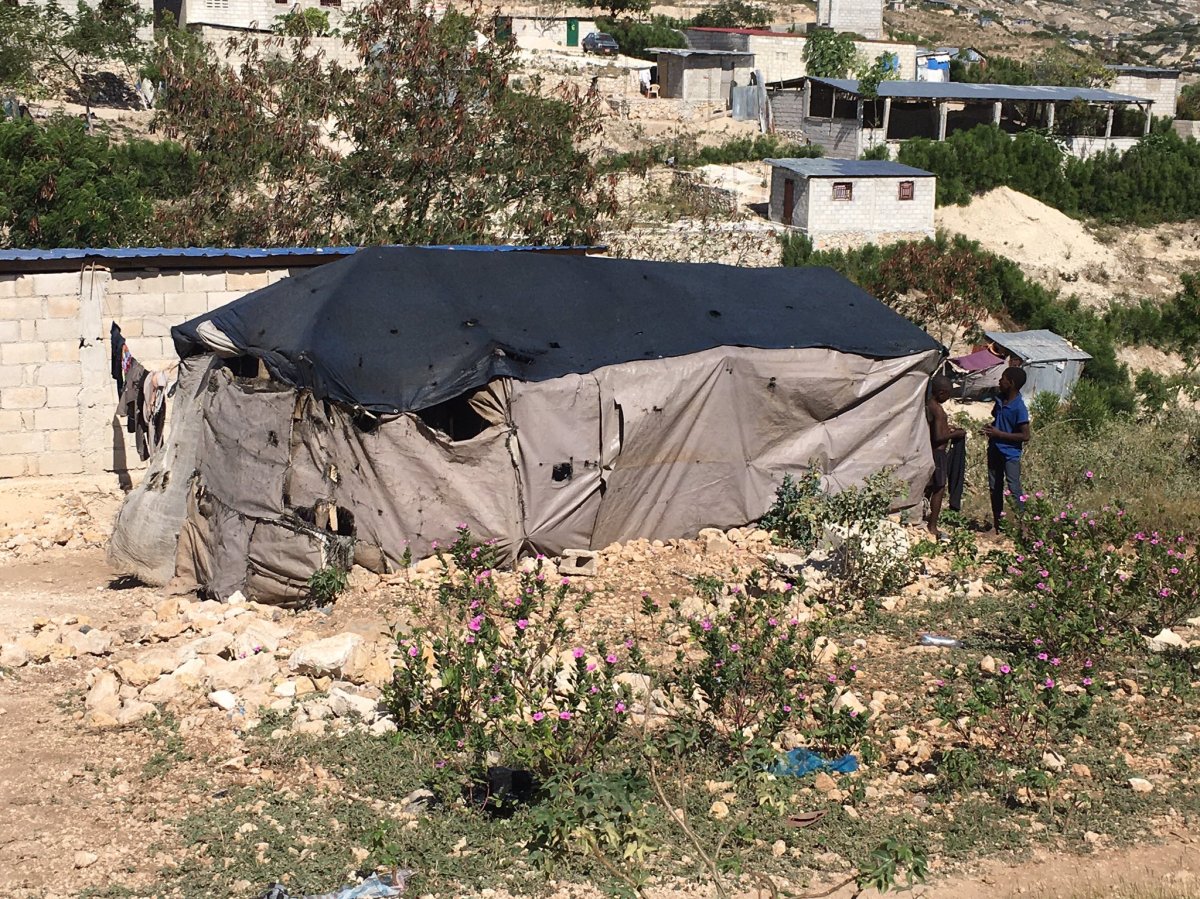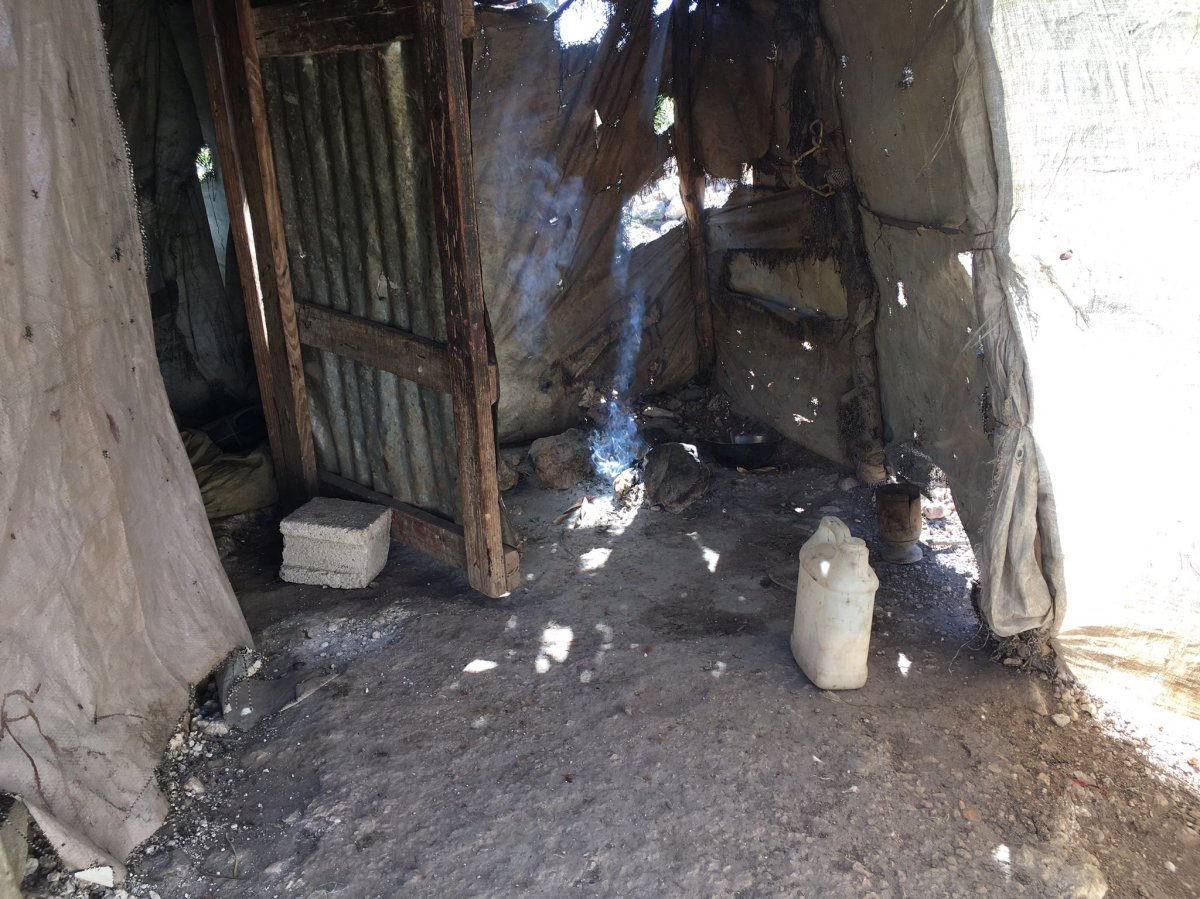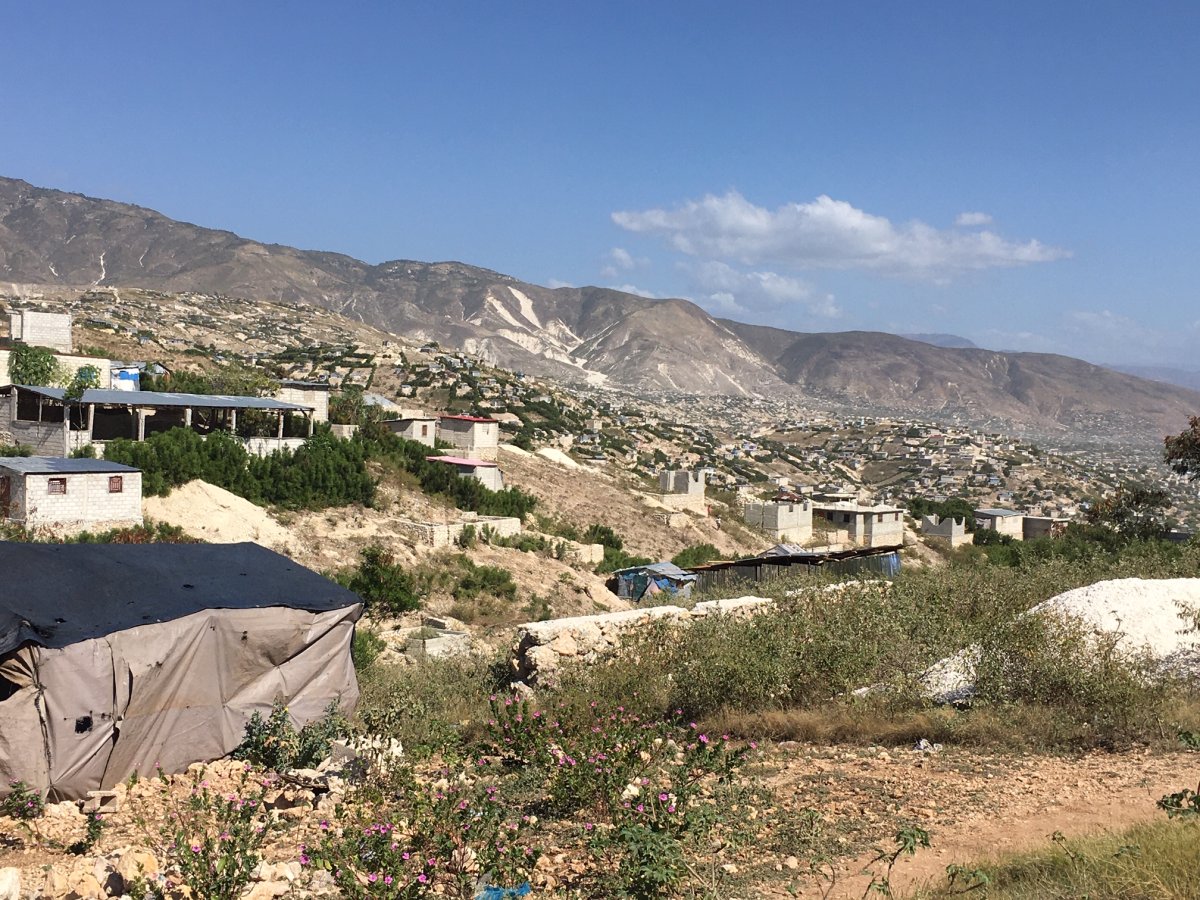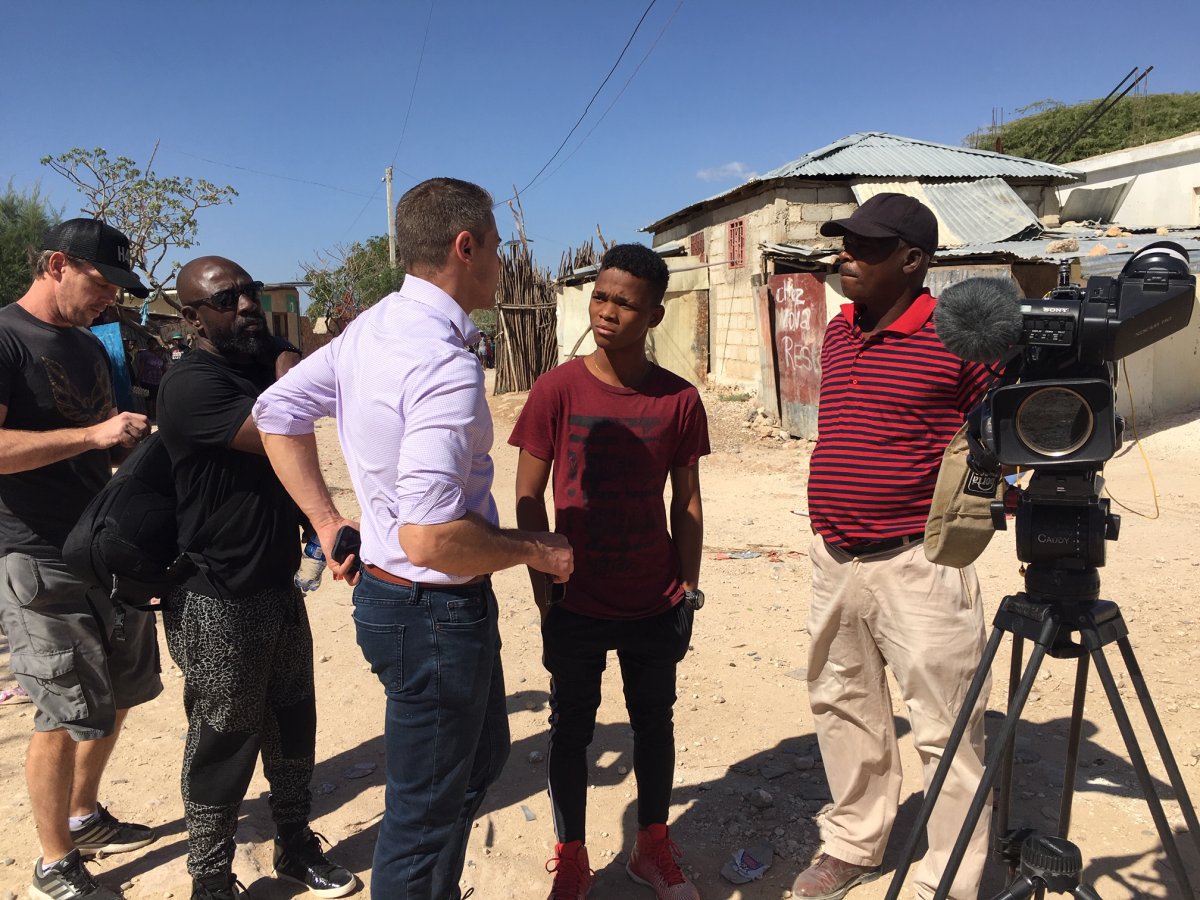Global News journalists Valerie Laillet and Antony Robart are reporting from Haiti for the 10th anniversary of the earthquake that devastated the country in 2010. Valerie Laillet filed this first-person report.

A two-hour drive takes us two worlds apart. We leave congested and colourful Port-au-Prince, heading southwest, along streets packed with people. As we approach our destination, there are fewer and fewer people to ask for directions. We pull over on 1ere Avenue de Canaan, with watchful eyes zoning in on us. A man sitting on a ledge nearby walks up and says ” I don’t want you to take my picture. I want to eat.”
More than one million people were displaced after an earthquake struck Haiti on January 12, 2010. Temporary tent cities were set up to house displaced residents. Ten years later, a temporary site in Canaan has grown.

Surrounded by jagged mountains and dust-filled air, Canaan is a makeshift community. Grocery stores, schools, churches, a basketball court and even a hair salon – things you expect to find in a suburban neighbourhood. A number of homes are made of cement blocks. But some families still live in the very tents that were put up 10 years ago.
We walk up to a tent, unsure if there’s anyone inside.
Ismo Josafa sits in front of a smoky fire with one of her sons. This is her home, where she lives with her husband, three sons, sister and nephew. Inside the tent, there are plastic bowls, a gas tank, basins for washing clothes and other items. Josafa tells us she lost everything in the earthquake, including some of her family members.
Her children play outside, as other kids walk by.
Three sisters are carrying buckets of water. There is no running water, electricity or other public services in Canaan. The girls, Magdala, Magdalene and Sophia-Cka, are heading back to their home, pointing to the structure made out of blue metal behind Josafa’s home. I’m caught off guard when Magdalene asks me if I like kids. I hesitate for a second and answer yes. Right away, she says “then take me with you. ”
A little ways away, we speak to others about life in Canaan. A wide-eyed boy stands nearby. He tells me his name is Stanley, but can’t tell me his age. Locals say he’s about seven. Stanley was born here. The makeshift community is all he’s ever known and he’s never been to school. While there are schools in Canaan, families still need to come up with the money to send their children.
19-year-old Stevens Osias goes to school about 6 kilometres away in Delmas. He says Canaan is “not liveable. We’re living but we’re not living.” He says most people don’t have food. Stevens’ father tells us he has eight kids to feed. To make a living, Remoncial Osias builds gates for homes in the area. He shows us his open-air metal shop. Men down the street are laying cement blocks, and a motorbike makes several trips carrying aluminum sheets as trucks drive by with wood and construction material.
An abandoned blue and white building is fenced in. I’m told the government built a police station years ago, but it’s never been occupied. Canaan is without law. A resident says there is no one there to protect them.
People in Canaan explain how they’ve taken things into their own hands. But as residents continue to build on the land, some 10-year-old tents still stand and families still lack basic necessities.
Watch below: 10-year anniversary of Haiti earthquake




















Comments